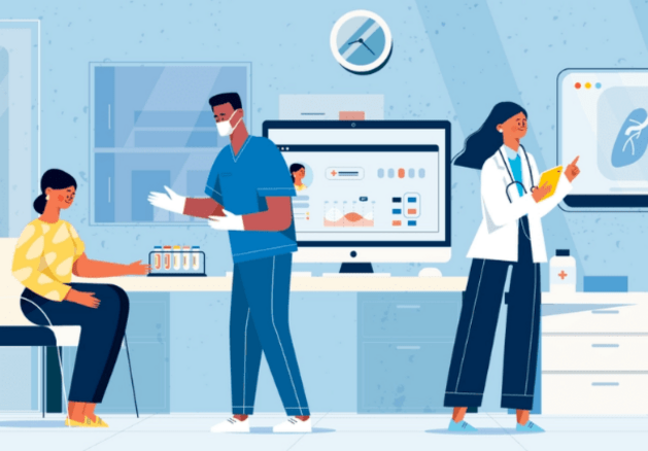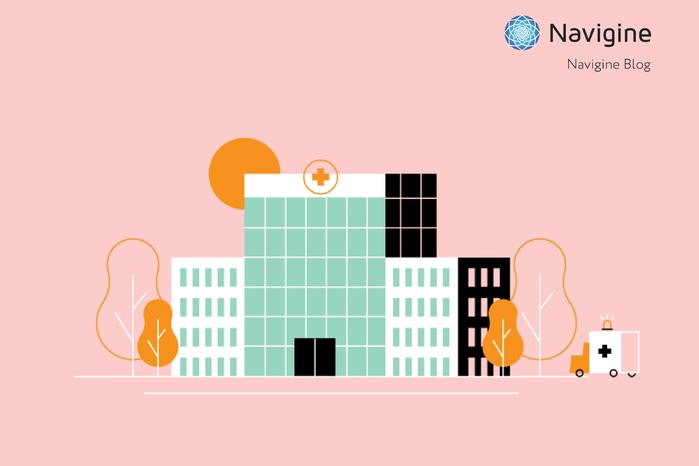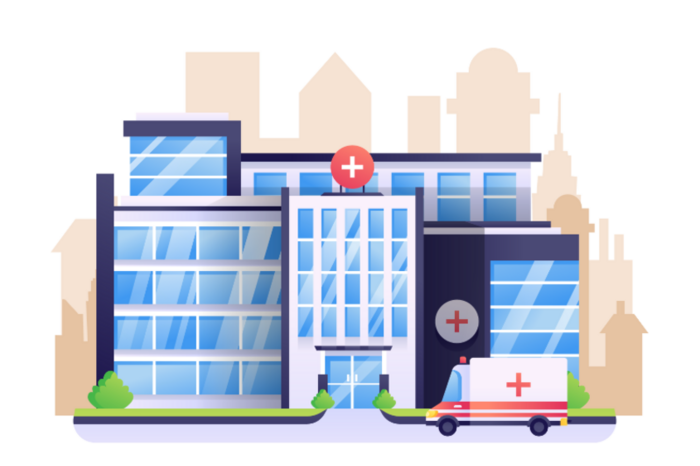Img Source - Jessica Flores
The 2020 coronavirus pandemic has shown that not all medical institutions were ready for mass flows of people. The main problem is that searching for the necessary room or doctor’s office in hospitals can cause anxiety, making a person ask the medical staff who are already overwhelmed with work. Thus, in 2023, it is essential to organize a quick search for objects and convenient indoor navigation for hospitals, which will significantly facilitate the work of employees and increase visitors’ loyalty.
Importance of hospital wayfinding
Hospitals are crowded places with daily flows of high intensity. If a medical institution is large enough and consists of many campuses, departments, and buildings, the movement around the territory can be complicated, causing difficulties in searching for the necessary objects. Navigation solutions for healthcare can solve these problems. Using these technologies, patients and visitors can easily navigate in space and avoid stressful situations.
The implementation of navigation into the infrastructure of medical institutions ensures the following benefits:
- It enhances the efficiency of medical staff by reducing their workload, enabling hospital visitors to reach their destinations without requiring external assistance. This reduction in unnecessary interactions between staff and visitors not only saves time for medical professionals but also allows them to focus on more critical daily tasks. Wayfinding contributes to maintaining a calm environment for patients, reducing stress for doctors and nurses, and ultimately enhancing their productivity.
- Furthermore, it offers visitors a quick and straightforward means of locating specific objects or rooms. A well-organized indoor-outdoor navigation system within hospitals is intuitive for most individuals, expediting the process of finding desired destinations and saving visitors valuable time. Patients can navigate more effectively within the sprawling hospital spaces and consistently find their way to their intended locations.
- Additionally, wayfinding systems enable hospitals to enhance their image and bolster visitor and patient loyalty, contributing to the concept of "smart hospitals." Implementing such technology positions a hospital as a modern and technologically advanced institution. Visitors gain a better understanding of the facility, making subsequent visits more convenient. The ongoing improvement of the clinic's services and facilities makes it more appealing to patients, fosters their loyalty, and encourages them to return to the institution repeatedly.
Indoor navigation systems are widely used in healthcare. Statistics show that they’re actively implemented in many hospitals and provide more efficient patient care. According to forecasts, from 2022 to 2030, the average annual growth rate of the navigation systems market will be 32.56%, and its total volume should reach $92.36 billion by the end of the study period.
Types of wayfinding for healthcare
Wayfinding inside hospitals can be arranged in several ways depending on the size of a medical institution. The most common examples of wayfinding are digital signs, information booths, visual navigation, and a wayfinding app for hospitals.
Digital signs
Physical and digital signs are crucial for hospital performance. They can be used both for displaying information about the place and for simplifying the search for various objects. Signs with arrows pointing the way to the points of interest can be a good example of digital signs. Many clinics use signs of different colors to distinguish different departments. These solutions are intuitive for visitors and ensure better identification of routes.
Information booths
Booths have a two-fold benefit for patients. On the one side, they offer maps for navigating around a hospital; on the other hand, they give detailed information about an institution. Such places can be found practically in any large clinic. They can be digital or usual and help search forwards, procedure rooms, doctors’ offices, and even individual employees.
Visual navigation
Visual navigation is understood as special tips that help quickly get to the destination. Convenient search is ensured by structured ways that include the original use of the color palette, various symbols, or backlight. If it is necessary to improve the perception of visual navigation, symbols and colors can be simply updated making routes more understandable for visitors.
Indoor navigation in mobile apps
In recent years, modern forms of indoor navigation, organized with the help of mobile apps, have acquired more popularity. To locate the necessary object, a visitor needs a smartphone with the pre-installed mobile application. The system can provide digital maps and create the shortest route which will help to get easily and quickly to places of interest. Thanks to this solution, a visitor can find any objects inside or outside a hospital without disappointment or stress from losing valuable time.
Indoor Navigation and Wayfinding BLE Kit - Minew Hardware
Try all location-powered capabilities with the Navigine Indoor Indoor Navigation and Wayfinding BLE Kit - Minew Hardware
Purchase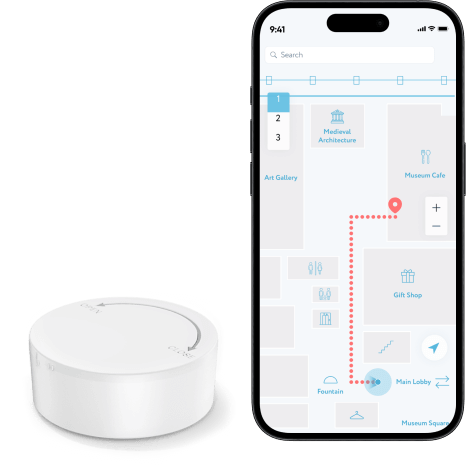
Navigation using QR codes
QR hospital wayfinding is a convenient and effective system for helping patients navigate inside the building. Visitors can easily scan QR codes located in various areas or rooms to get information about their current location and directions. This is especially useful for hospitals, where a complex structure and a large number of areas can be challenging. Using QR navigation, patients and visitors can quickly find the right room or doctor’s office, which contributes to a better patient experience.
To see how the QR navigation system works, scan the QR code below:

Indoor navigation for hospitals: What’s this?
More and more medical institutions are applying indoor navigation. Mobile technologies work more efficiently in comparison with signs or information booths and allow increasing patient satisfaction with visiting clinics.
Any navigation system is based on a combination of software and hardware that is adjusted to display the detailed scheme of the place and the territory. Using the navigation, a person can see the location of an object on the map and track his movement around the hospital in real-time.
The system is characterized by wide functionality and offers visitors not just simple step-by-step navigation, but a wide range of additional options, including:
- Intuitive search for objects on the map by keywords;
- Possibility to make a remote appointment;
- Reminders about appointments or other visits;
- Personalized notifications based on the current location;
- Possibility to share your location with relatives or friends.
The technology allows finding the shortest way to the needed object. The system is configured to use the most suitable lifts, entrances, and halls. If desired, users can choose the routes that will allow them to avoid too narrow stairs or steep climbs. More detailed information can be provided about each object. Thus, if it is a doctor’s office, a visitor can get access to his contact information or data on his working hours.
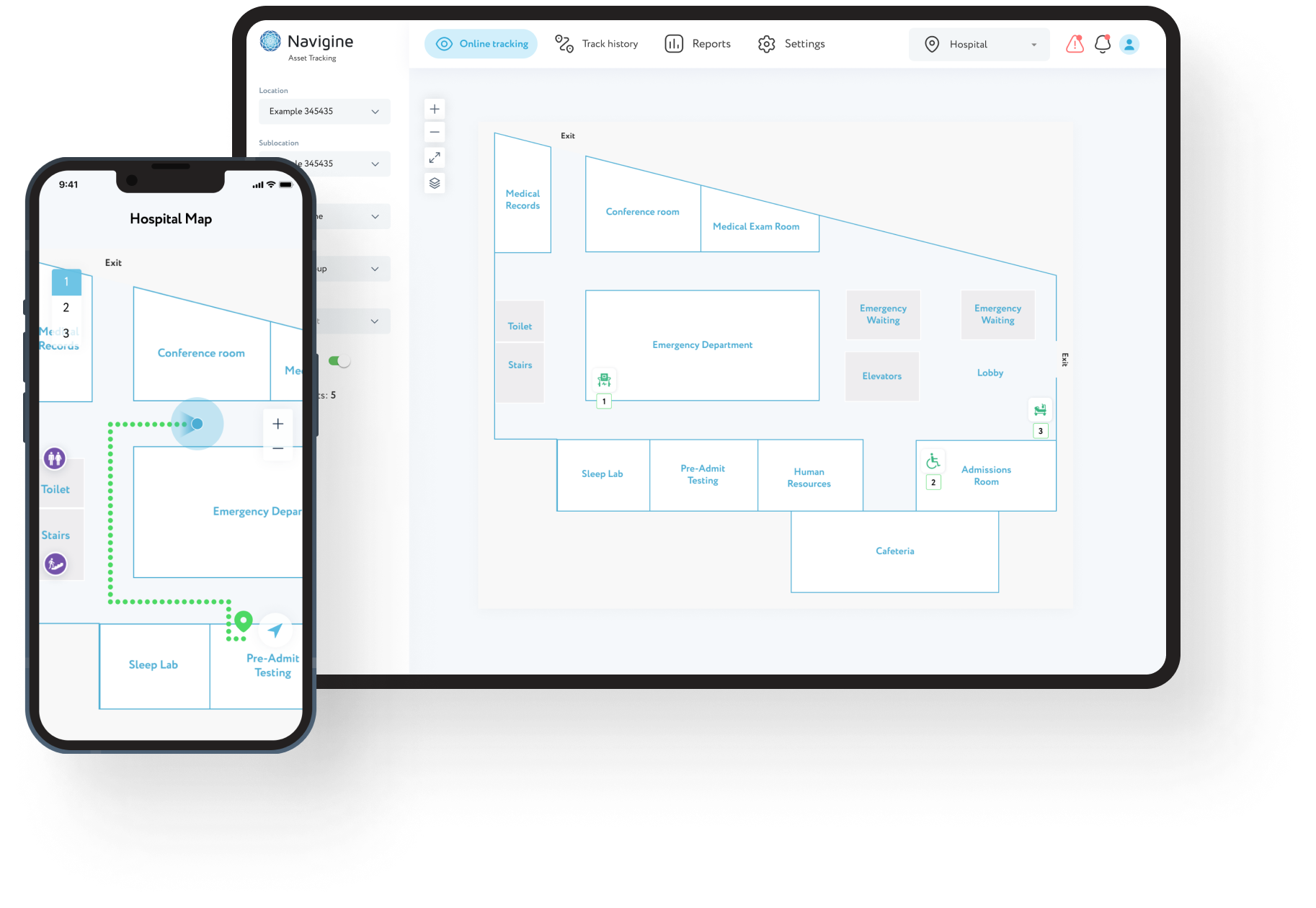
Indoor navigation belongs to innovative solutions that allow managing flows of visitors and reducing the time of their staying inside a hospital. Thanks to the system implementation, it is possible to cut down on appointment time and avoid queues near rooms or registration desks. Every year indoor-outdoor tracking solutions are used more and more widely for improving navigation at hospitals and other medical institutions. It is particularly relevant with the beginning of the pandemic when hospitals got an important task of ensuring social distancing and lowering the staff workload.
Technologies for implementing indoor-outdoor navigation
The navigation system in the mobile application can be realized with several techniques to choose from. One of the most effective solutions is iBeacon technology based on the Bluetooth® Low Energy platform. The halls and rooms of a medical institution are equipped with special beacons that transmit signals at specified intervals. Users’ mobile devices detect these impulses and let the system define the location of a person. The accuracy of calculations is about 1 m.
Based on the data about a user’s location, the platform builds routes, delivers information about objects, and sends out notifications. iBeacon technology is characterized by simple integration into the already existing hospital infrastructure and doesn’t require high implementation costs. Sensors (beacons) are powered by independent sources of supply that can function, on average, for 5 years, so the system maintenance costs are minimal.
Another popular solution is Wi-Fi technology that automatically identifies objects using the existing points of access and allows localization in real-time. As well as iBeacon, the system makes it possible to build routes and send out messages, but its accuracy is, on average, up to 3-5 m.
UWB technology is applied for high accuracy localization. It allows detecting an object with an accuracy of up to 30 sm. Moreover, indoor navigation can be realized with the help of such technologies as RFID, GPS, and some other modern solutions which are selected taking into account the size and needs of an institution.
Example of implementation by Navigine
As an example of wayfinding in healthcare, let’s take a look at the system that Navigine implemented in collaboration with equipment supplier Minew. Our task was to facilitate the movement of visitors and staff under the condition of a large influx of patients, as well as ensure social distancing compliance during the COVID-19 pandemic and simplify the search for medical equipment within the building.
As part of the project, our specialists created an effective hospital wayfinding system, which worked based on the SDK for indoor navigation. To implement it, beacons and wearable equipment from Minew were used.
After implementing the system, the clinic’s efficiency increased by 10%. The results were the following:
- reducing search time for medical tools and equipment by an average of 20%;
- building convenient routes within the territory of the medical facility;
- increasing the safety of people by reducing the occupancy of halls and reception areas.
What is necessary for navigation implementation?
To have only a positive and successful indoor-outdoor navigation experience for hospitals, the implementation into the clinic infrastructure has to be done professionally and the following moments should be considered:
- Hospital plan. For the quality implementation of navigation solutions, it is necessary to have a detailed plan of all rooms and objects so as not to have problems in the future in searching for points of interest.
- Selection of equipment. It is essential to competently approach the issue of choosing the technology and equipment that will meet the needs of a particular hospital. All beacons and tags have to be installed correctly and in appropriate places, so the installation should be trusted only by professionals.
- Successful deployment. To make navigation work, correct installation is not enough – people have to be informed about its availability. Advertising, information booths, or even the “word of mouth” can assist in this.
- Accessibility. While implementing the system, one should make sure that all the objects on the territory and hospital buildings are accessible for patients, especially elevators and ramps for people with limited mobility.
- Cross-platform. Navigation needs to be available on any device – smartphones, laptops, tablets, etc. Patients should have the possibility to choose the most convenient way of interaction for them.
The future of hospital wayfinding
Many experts believe that hospital wayfinding solutions have a bright future. Gradually, many healthcare facilities will be able to move to real-time healthcare systems (RTHS), which will provide movement through buildings based on the patient's location. With those, you can easily build routes to points of interest and improve the quality of customer service. The wayfinding systems will allow for:
- eliminating the stress associated with searching for offices or rooms in a place unfamiliar to visitors;
- optimizing patient care;
- providing users with access to constantly updated information about hospital activities (opening new areas, doctors’ schedules, etc.);
- saving the time of medical staff, which can sometimes be spent on giving directions to visitors.
Navigine develops navigation systems and offers clients effective solutions for navigation in hospitals. At your service are carefully thought-out software systems based on defining the exact location of objects. They help to develop user-friendly mobile apps that can assist in searching and wayfinding inside buildings. For obtaining more detailed information on our offers, contact Navigine specialists by filling in the form.
Are you interested in hospital wayfinding? Discuss more in a private free consultation:
You can also learn more about our advanced indoor navigation system for hospitals!
